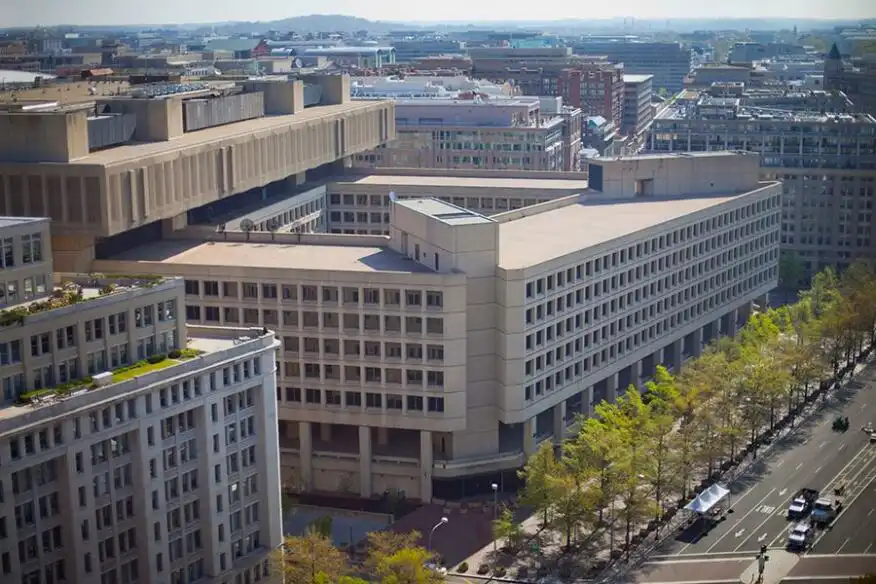The current US President, Donald Trump, has returned to the White House after a triumphant 2024 US elections. President Donald J. Trump has begun his second term with several executive orders. And one of them has particularly captured the attention of the architectural community like never before. Yes, it is the Memorandum issued to the administrator of the General Services Administration, “Promoting Beautiful Federal Civic Architecture.”
The Memorandum commands that the concerned officials, including the Administrator of the General Services Administration and the Assistant to the President for Domestic Policy, suggest recommendations to update the late Senator Daniel Patrick Moynihan’s 1962 Guiding Principles for Federal Architecture such the Federal Buildings “uplift and beautify public spaces and ennoble the United States and our system of self-government” within 60 days.
The Memorandum advocates for Federal Buildings to be visually distinguishable as Civic buildings and suggests an inclination towards regional, traditional, and classical architecture for Federal Buildings. In addition, it also outlines the procedure to approve or proceed with the design of new federal buildings in the meantime.
What happened in the past?

However, Donald Trump’s interests against brutalist and modern designs of Federal buildings and concerns regarding the design of civic buildings are not new and only continue in his second term. Early in his first Presidency, President Trump issued a draft executive order better known as “Making Federal Buildings Beautiful Again” that sparked heated debates shortly after Architectural Record revealed it.
The draft openly criticized the General Services Administration Design Excellence Program’s inability to reflect national values in Federal Buildings that, more often than not, were rooted in the principles of Brutalism or Deconstructivism. According to Moynihan’s Guiding Principles, Federal buildings have to serve as “a visual testimony to the dignity, enterprise, vigor, and stability of the American government.” Drawing on Moynihan’s guiding principles and using the very same words, the draft deemed that the Brutalist and Deconstructivist Federal Buildings “fail to satisfy these requirements and shall not be used.”
But it is notorious that the very same Moynihan’s Guiding Principles press the need to refrain from adopting an official style for Federal Buildings. Quoting from the Guidelines, “Design must flow from the architectural profession to the government and not vice versa…The Government should be willing to pay some additional cost to avoid excessive uniformity in the design of Federal buildings.”
Draft Executive Order Sparking Heated Debates

The American Institute of Architects condemned the very idea of homogenizing the Architectural style of Federal Buildings, the top-down approach, as it is a threat to the ‘freedom of expression and thought’, that usually exists in democracies.
The AIA believes that Civic Buildings should reflect the diversity of the nation’s places, cultures, and climates and that the architects are committed to honoring the past while displaying a glimpse of a prosperous future. In response to the draft order, the body called its members to sign an open letter, an online petition with its statement on the matter to the White House.
Subsequently, the agitation was also reflected in the House of Representatives. A bill named the “Democracy in Design Act,” mainly proposed to counter the anticipated Executive Order, was introduced in the 116th Congress by Rep. Dina Titus.
On the Other Hand, the Justification Behind the Order
“Shouldn’t a democratically elected government make sure that its buildings don’t alienate the citizens who pay for them?” asks architecture critic Justin Shubow, former President of the National Civic Art Society. Shubow argues that the Guidelines Principles favoring the freedom of designers, which the AIA holds high, ignore the interests of the common public and prevent the elected members from ensuring that the designers and contractors indulge only in fair practices.
Shubow presents another side to the argument governing the founding fathers of America, President George Washington and Secretary of State Thomas Jefferson. He states that they adopted the classical style for Federal Buildings, reflecting the democratic Athens and republican Rome, as they found the classical architecture to be timeless. Hence, according to Shubow, Americans viewed “classical architecture as architecture of American democracy.”
He strengthens his argument by presenting the results of a survey conducted online by the National Civic Art Society in collaboration with the Harris Poll. More than 2,000 American adults participated in the survey and expressed their preferences for Federal Architecture. The survey results concluded that the Americans exhibited a strong preference for a more traditional look and classical style of architecture for Civic Buildings and Courthouses.
“Promoting Beautiful Federal Civic Architecture,” The Past Repeats Itself

Amidst the criticisms and disapproval, following the draft order, President Donald Trump issued the executive order titled “Promoting Beautiful Federal Civic Architecture” on 21 December 2020 in his first term as president, which was revoked by the newly elected President Joe Biden in February 2021. But again, in his second term, President Donald Trump has decided to move forward with the executive order, notably early on in this tenure displaying his unchanged stand on Federal Architecture, Brutalism, and Classical Architecture. However, Congresswoman Dina Titus again reintroduced the “Democracy in Design Act” on 26th February 2025 in response.
The Executive Order that condemns Brutalism and favors Classical Architecture is acclaimed and criticized. While some find it democratic owing to the history of its use in Federal Buildings of Early America, others find it imposing, resembling the 20th-century redesign of the Cities of Rome and Berlin by totalitarians. Similarly, while some find Brutalism cold and incomplete, others find it monumental and durable. Both Brutalism and the recent Executive Order seem to be subjects of polarization. What do you think?


















Leave a comment